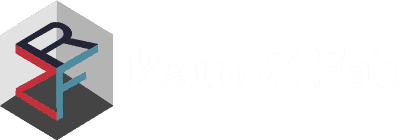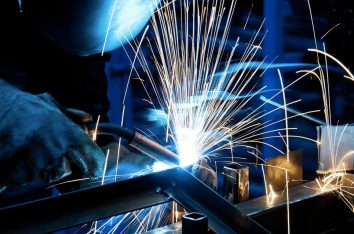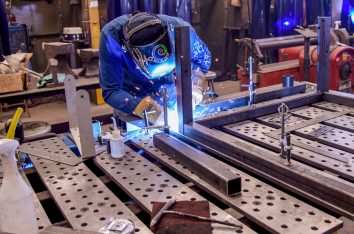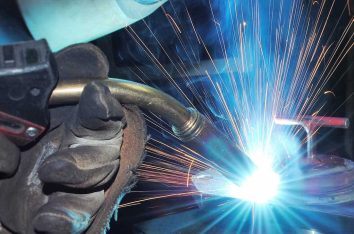When it comes to finishing metal parts, two popular methods stand out: powder coating and wet paint. Both aim to protect and beautify metal surfaces, but they do so in very different ways. This article will dive into the ins and outs of each method, comparing their processes, benefits, and drawbacks. By the end, you'll have a clear understanding of which finish might be best for your specific needs.
Key Takeaways
- Powder coating is highly durable, resisting rust, corrosion, and damage better than wet paint.
- Wet paint is generally cheaper and more accessible, making it suitable for smaller or less demanding projects.
- Powder coating is more eco-friendly, as it contains fewer harmful chemicals and produces less waste.
- Wet paint allows for a wider range of colors and finishes, offering more flexibility in design.
- Both methods have their unique advantages, so the best choice depends on the specific application and requirements.
Understanding Powder Coating
Powder coating is a dry finishing process that uses electrostatically charged powder particles to create a durable, uniform coating on metal surfaces. This section delves into the principles of powder coating, its advantages, and its suitability for various fabricated metal parts.
Definition and Process
Powder coating is a dry finishing process commonly used on metal parts. The actual powder coating process involves spraying metal parts with an electrostatically charged powder. This powder sticks to the metal, and when heated in an oven, it melts and forms a smooth, durable finish. The process includes several steps: surface preparation, powder application, and curing.
Materials Used
The materials used in powder coating include additives, pigments, and resins. These components are combined in a powder form and applied using compressed air. The powder is electrostatically charged, which helps it adhere to the metal surface. This method allows for a thicker coating compared to wet paint.
Common Applications
Powder coating is widely used in various industries. It is commonly applied to industrial equipment, automotive parts, and household appliances. The process is favored for its durability and resistance to chipping, scratching, and corrosion.
Exploring Wet Paint
Wet paint, a liquid-based finishing method, has been a popular choice for metal fabrication for decades. This section examines the different types of wet paint, their application techniques, and the factors that contribute to their performance and longevity on fabricated metal parts.
Definition and Process
Wet paint is a traditional finishing method that involves color particles suspended in a liquid solvent. This paint mixture is fed into a pressurized applicant like a pump or spraying device, which delivers it onto the dry metal surface. You must clean the metal surface of oil and dirt residue before applying the paint. It may take multiple coats of paint to ensure an even finish.
Materials Used
The materials used in wet paint include pigments, solvents, resins, and additives. Pigments provide the color, while solvents keep the paint in a liquid state for application. Resins help the paint adhere to the surface, and additives can enhance properties like drying time and durability.
Common Applications
Wet paint is commonly used in various industries due to its versatility. It is often applied to automotive parts, machinery, and household appliances. This practice enables the paint system and process to be designed to suit the specific requirements of different materials and applications.
Durability Comparison
Comparing the durability of powder coating and wet paint is crucial when selecting a finish for fabricated metal parts. This section analyzes the resistance to chipping, scratching, fading, and weathering of both finishes, helping readers make an informed decision based on their specific requirements.
Resistance to Rust and Corrosion
Powder coating provides superior durability compared to traditional liquid paint. The thick and adhesive finish of powder coating ensures that it can withstand harsh environments, heavy use, and exposure to various elements without chipping or fading. This durability makes powder coating an excellent choice for architectural products which face wear and tear.
Impact Resistance
Powder coat is typically 3-6 times thicker than wet spray paint. The higher thickness improves the corrosion resistance and overall durability verses wet spray paint. In addition, the thermal bonding process of powder paint provides a stronger bond and structure of the paint making less prone to chipping.
Longevity
Its durability ensures that you won't have to spend money on refurbishments and replacements, saving you money in the long run. The enhanced durability and corrosion protection of powder coat paint frequently lead to a longer product life, which can help reduce the overall coating cost per year of product service in terms of life cycle cost. Besides, its efficiency and ease of use results in a material that is also extremely cost-effective.
Environmental Impact
The environmental impact of finishing processes is a growing concern in the metal fabrication industry. This section compares the environmental friendliness of powder coating and wet paint, considering factors such as volatile organic compounds (VOCs), waste disposal, and overall sustainability.
Eco-friendliness of Powder Coating
Powder coating is known for being environmentally friendly. It doesn't use harmful Volatile Organic Compounds (VOCs), which can form smog when they react with sunlight and nitrogen. Additionally, any overspray from powder coating can be collected and reused, reducing both waste and costs. The electrostatic application method also results in higher transfer efficiency, further minimizing waste compared to wet paint.
Environmental Concerns with Wet Paint
Wet paint, on the other hand, often contains VOCs, which contribute to air pollution and smog formation. These compounds can be harmful to both the environment and human health. Moreover, the application process for wet paint typically results in more waste, as overspray cannot be easily collected or reused.
Waste Management
Managing waste is simpler with powder coating. Since the overspray can be collected and reused, there is less waste to dispose of. In contrast, wet paint overspray is usually considered hazardous waste and requires special disposal methods. This makes powder coating a more sustainable option in terms of waste management.
Application Techniques
The application techniques used for powder coating and wet paint can significantly affect the quality and consistency of the finish. This section explores the various application methods, including spray painting, dip coating, and electrostatic spraying, and their suitability for different types of fabricated metal parts.
Powder Coating Application
Powder coating consists of applying dry powder (usually made out of thermoplastics) electrostatically to create a hard finish that is more long lasting than wet paint. The process involves several steps:
- Surface Preparation: Cleaning the metal part to remove any dirt, oil, or rust.
- Application: Spraying the powder onto the part using an electrostatic gun.
- Curing: Heating the coated part in an oven to melt the powder and form a smooth, durable finish.
Wet Paint Application
Wet paint application involves spraying liquid paint onto the metal surface. The steps include:
- Surface Preparation: Similar to powder coating, the metal must be cleaned thoroughly.
- Priming: Applying a primer to enhance paint adhesion and durability.
- Painting: Spraying the paint onto the primed surface.
- Drying: Allowing the paint to air dry or using heat to speed up the process.
Drying and Curing Times
The drying and curing times for powder coating and wet paint differ significantly. Powder coating requires a curing period in an oven, which can take anywhere from 10 to 30 minutes depending on the material and thickness of the coating. Wet paint, on the other hand, may take several hours to dry completely, and additional time may be needed for the paint to fully cure. This difference in drying and curing times can impact production schedules and overall efficiency.
Maintenance Requirements
Maintaining the finish on fabricated metal parts is essential for preserving their appearance and functionality. This section compares the maintenance requirements of powder coating and wet paint, including cleaning methods, touch-up procedures, and the frequency of reapplication needed to keep the parts looking their best.
Cleaning and Upkeep for Powder Coating
Powder-coated surfaces are relatively easy to maintain. Regular cleaning with mild soap and water is usually sufficient to keep the finish looking new. Avoid using abrasive cleaners as they can damage the coating. For stubborn stains, a soft brush can be used to gently scrub the area.
Cleaning and Upkeep for Wet Paint
Maintaining wet-painted surfaces requires a bit more effort. These surfaces should be cleaned regularly to prevent dirt and grime buildup. Use a gentle cleaner and a soft cloth to avoid scratching the paint. In some cases, you may need to apply a fresh coat of paint to maintain the appearance.
Long-term Maintenance
Both powder-coated and wet-painted surfaces require long-term maintenance to ensure their longevity. Powder coating generally requires less frequent touch-ups compared to wet paint. However, both types of finishes benefit from periodic inspections to check for any signs of wear or damage. Addressing issues early can extend the lifespan of the coating.
Cost Considerations
When comparing powder coating and wet paint, cost is a significant factor. Each method has its own set of expenses, both initially and over the long term. Understanding these costs can help manufacturers make informed decisions.
Aesthetic Differences
The aesthetic appeal of a finish is often a key consideration for fabricated metal parts. This section examines the visual differences between powder coating and wet paint, including color options, glossiness, and the ability to create unique textures and finishes.
Finish Quality
Powder coating typically results in a thicker, more uniform finish compared to wet paint. This uniform color is achieved because the powder melts and flows together during the curing process, creating a smooth and even surface. Wet paint, on the other hand, can sometimes show brush strokes or uneven layers if not applied correctly.
Color Options
Wet paint offers a broader range of vibrant colors, allowing for more flexibility and control over the final hue. With wet paint, you can see the final dry state color from the start, making it easier to mix and match to achieve the desired shade. Powder coating, while available in many colors, may not offer the same level of variety as wet paint.
Texture Variations
Powder coating can provide a variety of textures, from smooth to matte to wrinkled finishes. This versatility makes it suitable for different aesthetic requirements. Wet paint also offers texture options but is generally known for its smooth finish. The choice between the two often depends on the specific texture and appearance desired for the project.
Suitability for Different Applications
Powder coating is highly valued for its exceptional durability, minimal environmental impact, cost efficiency, and aesthetic versatility. These qualities make it ideal for industrial applications where long-lasting protection is crucial. Wet paint, on the other hand, is often chosen for projects that require a quick turnaround and lower initial costs.
In commercial settings, the choice between powder coating and wet paint depends on the specific needs of the project. Powder coating offers a superior solution for high-traffic areas due to its durability and resistance to wear and tear. Wet paint is a great alternative for projects where budget constraints are a primary concern.
For residential applications, both powder coating and wet paint have their advantages. Powder coating is often preferred for outdoor furniture and fixtures because of its ability to withstand harsh weather conditions. Wet paint is commonly used for interior projects where a wide range of color options and finishes are desired.
Health and Safety Aspects
Ensuring the health and safety of workers is a top priority in the metal fabrication industry. This section compares the health and safety aspects of powder coating and wet paint, including the potential hazards associated with each process and the necessary precautions to be taken.
Safety in Application
When it comes to safety, powder coatings have a clear advantage. Powder coatings are non-flammable, which significantly reduces the risk of fire hazards in the workplace. This is a major safety advantage over solvent-based wet paints, which are highly flammable. Additionally, powder coatings do not contain volatile organic compounds (VOCs), making them safer to handle and apply.
Health Risks
Wet paints pose several health risks due to the presence of VOCs. Inhaling these solvents can lead to irritation of the nose and lungs and can cause various health issues. Long-term exposure to VOCs can have serious health implications, including respiratory problems and other chronic conditions.
Protective Measures
To mitigate the health risks associated with wet paints, it is essential to use proper protective equipment. This includes wearing masks, gloves, and protective clothing. Ensuring adequate ventilation in the workspace is also crucial to minimize inhalation of harmful fumes. For powder coating applications, while the risks are lower, it is still advisable to use protective gear to avoid inhaling any fine particles.
Technological Advancements
The metal fabrication industry is constantly evolving, with new technologies and innovations emerging in the field of finishes. This section explores the latest advancements in powder coating and wet paint, such as low-VOC formulations, self-cleaning properties, and improved application methods, and their impact on the performance and sustainability of fabricated metal parts.
Innovations in Powder Coating
Recent years have seen significant innovations in powder coating technology. One notable advancement is the development of more efficient curing processes, which reduce energy consumption and improve finish quality. Additionally, new formulations have been created to enhance the durability and appearance of the coating, making it suitable for a wider range of applications.
Innovations in Wet Paint
Wet paint technology has also evolved, with improvements in drying times and the introduction of more environmentally friendly formulations. These advancements help reduce the environmental impact of wet paint while maintaining its effectiveness. Furthermore, new application techniques have been developed to ensure a more even and consistent finish.
Future Trends
Looking ahead, the future of both powder coating and wet paint technologies appears promising. Researchers are exploring the use of nanotechnology to create coatings with superior properties, such as increased resistance to wear and tear. Additionally, there is a growing focus on developing coatings that are more sustainable and eco-friendly, aligning with global environmental goals.
Conclusion
In summary, both powder coating and wet paint have their own unique advantages and drawbacks when it comes to finishing metal parts. Powder coating stands out for its durability, low maintenance, and eco-friendliness, making it an excellent choice for long-lasting protection. On the other hand, wet paint is often more cost-effective and easier to apply for smaller projects. The best choice really depends on your specific needs and the nature of the project. By understanding the differences and benefits of each method, you can make a more informed decision that best suits your requirements.
Recent Posts
- Where to Find High-Quality Fabrication and Welding in Oregon
- Where to Find High-Quality CNC Machining in Oregon
- CNC Machining Services by Ram-Z Fab: Precision and Innovation in Willamette Valley
- CNC Machining in the Automation Industry: Precision Engineering for the Future
- CNC Machining in the Food Production Industry: Precision for Palates




